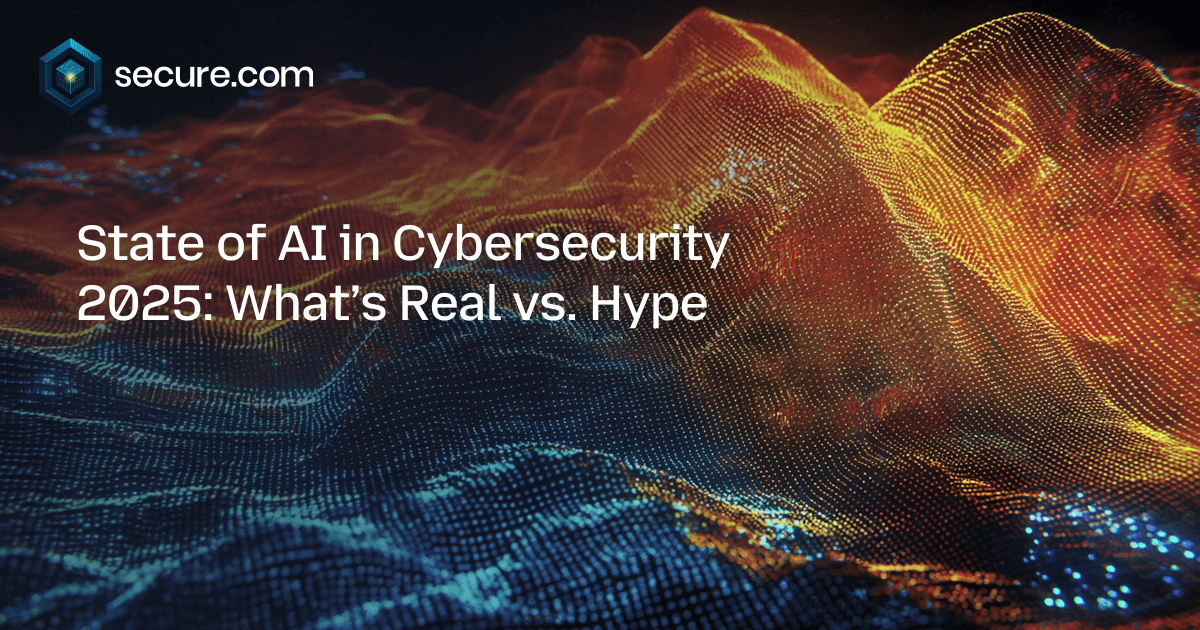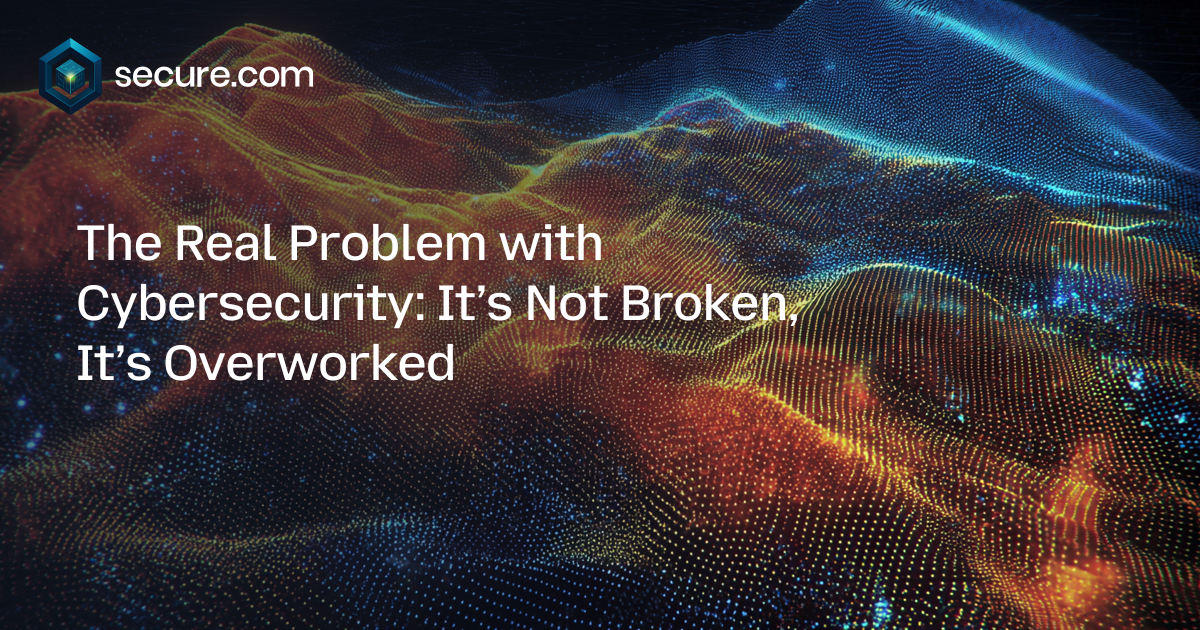State of AI in Cybersecurity 2025: What’s Real vs. Hype
AI promises "autonomous SOCs" that eliminate analyst burnout. But in 2025, most tools are noisy interns—not reliable teammates. Here's what actually works.
AI promises "autonomous SOCs" that eliminate analyst burnout. But in 2025, most tools are noisy interns—not reliable teammates. Here's what actually works.

AI in cybersecurity delivers real gains in alert triage and detection when deployed with human oversight. But separating vendor hype from battlefield reality requires looking at what's actually working in 2025 and beyond.
Security leaders today stand on a fault line: AI is both a guardian and a weapon. Vendors promise "autonomous SOCs" that slash detection times, while attackers use the same generative AI to scale phishing, malware, and fraud. The truth sits between marketing and mayhem, AI delivers measurable gains in alert triage and threat detection, but only with clear guardrails and SOC review. So where's the real story in 2025?
Any type of anxiety when off the clock is caused by business pressures, not the dashboards themselves. An overworked engineer, supporting under invested, unreliable services, with minimal/no on call cover, is definitely more likely to log in and check, as getting ahead of potential problems is more politically prudent, than getting a 2AM call from the Boss on a Saturday, screaming bloody murder, because the company is losing money and your job is threatened. Even in less toxic scenarios, new product launches and regressive deployments can cause similar conditional pressures.
(Source: Reddit)
The areas of greatest concern include:
Survey data shows that organizations are well aware of this shift:
The most common “win” is in the SOC itself. According to Recorded Future’s State of AI 2025, a majority of security leaders reported measurable improvements in mean time-to-detect (MTTD) and mean time-to-respond (MTTR) after introducing AI chatbots into their workflows. These tools excel at triaging repetitive alerts, clustering similar incidents, and highlighting anomalies.
Secure World’s industry roundup highlights one major bank that reduced alert fatigue by 30% after layering AI models on top of its SIEM and SOAR platforms. Analysts described the AI assistant as “good at cleaning the noise so humans can focus.”
But these gains are not universal. Another Fortune 100 company saw its AI platform miss a slow, stealthy intrusion that relied on living-off-the-land techniques. The breach was eventually discovered by a human analyst. The lesson? AI improves throughput but still struggles with sophisticated adversaries.
On the phishing front, AI is proving to be an effective spam filter upgrade. MixMode reports that a significant share of phishing attempts in 2025 were flagged by AI engines as “AI-generated content” - something legacy filters couldn’t detect. This has reduced the number of low-effort phishing emails reaching employees.
IBM’s Cost of a Data Breach Report 2025 backs this up with numbers: organizations using AI-enhanced detection saved an average of millions of dollars per breach compared to those without. AI is proving especially useful in financial fraud detection, catching anomalies in wire transfers or account takeovers that would previously slip past rule-based systems.
Still, gaps remain. Ivanti points out that in many incidents, attackers didn’t even need AI - they exploited unpatched vulnerabilities that defenders overlooked while chasing shiny AI solutions. And in the ISC2 community, practitioners share a similar caution: “AI catches the spam, but zero-days still eat us alive.”
On Reddit, SOC analysts express frustration with AI tools that generate “endless dashboards” but require constant validation. One user summarized it bluntly: “It’s not autopilot. It’s like having a noisy intern that sorts your inbox but still asks you to check everything twice.”
Taken together, the reality is this: AI works best as part of an automation framework : a structured layer that manages workflow, correlation, and validation while giving analysts room to think. The value isn’t in replacement, but relief. It works best as a filter, not a decision-maker. And in cybersecurity, that distinction matters.
In 2025, phishing emails have evolved from clumsy scams to flawless corporate communications. Recorded Future reports that the percentage of phishing campaigns generated or enhanced by large language models continues to climb year over year. Unlike traditional spam, these messages mimic internal tone, borrow from leaked data, and adapt to local languages with near-perfect accuracy.
According to IBM’s Cost of a Data Breach Report 2025, companies using AI for detection and response saw an average reduction of millions in breach costs compared to non-AI adopters. Faster containment, fewer false positives, and automated workflows all translate to measurable savings.
But there’s another side. Licensing fees for enterprise-grade SOC chatbots have surged, and vendor lock-in creates long-term budget risks. One enterprise reported spending more on its AI security suite in 2025 than on its entire SIEM infrastructure in 2023.
Ivanti cautions that in the rush to fund AI initiatives, many companies underfund basic patch management, which remains the root cause of many breaches. AI doesn’t fix unpatched systems - and hype can create blind spots.
On Spiceworks, one analyst wrote: “AI saves time for juniors, but seniors spend twice as long validating.” That time translates directly into cost. On Quora, professionals debate whether “AI security” should be considered a new specialty or simply an inflated line item under traditional cybersecurity.
The financial equation is clear: AI saves money per breach but costs more upfront, and the balance varies by organization.
Secure.com stands apart by turning AI from a black box into a Digital Security Teammate that works with you. It doesn’t promise full autonomy; it delivers governed intelligence that learns from your context, acts within defined boundaries, and amplifies your decision-making while keeping humans in command.
Here’s how it works in practice. An analyst asks a natural-language question. Secure.com enriches the case, suggests an action, waits for human approval, then logs every step for audit trails. The workflow feels like teamwork, not blind automation.
This approach builds trust where it matters most. You stay in control, with AI handling the labor, not the leverage. It’s fast, transparent, and accountable—AI that acts like a teammate, not a gamble.
Public stories keep pointing to the same pattern. Overpromised tools that flood the SOC with false positives, hide how they work, or break during tuning. The weak spots are poor data quality, missing guardrails, and no human-in-loop review. If you see high noise, slow MTTR, and surprise gaps during audits, that is your sign that the tool is all pitch and no proof. Ask for proofs of detection, red team replays, and month-over-month drift reports before trust.
While defenders experiment with anomaly detection, attackers are racing ahead - and in some areas, they’re using AI more creatively than enterprises.
In 2025 and beyond, AI’s real value is filtering, correlating, and drafting next steps so humans can decide faster. “Autonomous SOC” remains aspirational; governed augmentation is here now. Winners pair AI speed with human judgment—and measure signal, speed, and safety every week.
If you’re evaluating AI security tools, here’s your checklist:

Google's landmark lawsuit targets a billion-dollar phishing empire with 1M+ victims as coordinated ransomware attacks hit eight organizations simultaneously and credential theft surges 160%.

Cybersecurity isn’t failing because tools are weak—it's failing because humans are drowning in alerts, false positives, and overwhelming workloads.

What are the main differences between how old SOCs and new SOCs handle alert triage? Old SOCs handle alert triage manually with high volumes of alerts across disconnected tools, validating each one, and documenting incidents by hand. Modern SOCs use AI, machine learning, and automation to connect, enrich, and prioritize alerts. In short, modern SOCs move from manual, human-dependent processes to more brilliant, automated workflows that make triage faster, more accurate, and proac